This page tells you some things that you always wanted to know about ATM Adaption Layers (AAL). Cellware can provide this (and more) in a handy pocket guide. Ask for your own copy.
AAL1
This AAL was designed by the ITU-T for continuous bit-rate (CBR) data such as voice and video. The simplest application is circuit emulation. AAL1 includes specifications for segmenting a continuous signal for transport in individual ATM cells
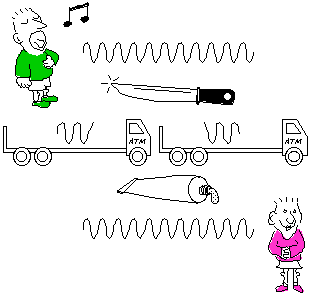
It also must transmit timing information through the network.
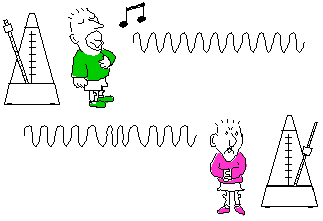
Particularly voice traffic is very sensitive to small variations in the timing. Some video CODECs are even more touchy and rely on plesiochronous timing stability to work at all.
Adaptive clock recovery and the SRTS process (Synchronous Residual Timestamp) are specified by the ITU-T in Recommendation I.363.1. The jitter and wander requirements for G.703 interfaces are specified in G.823.
Traffic shaping
No active shaping is required for AAL1 as it is automatically "well shaped" to produce cells with a very regular spacing.
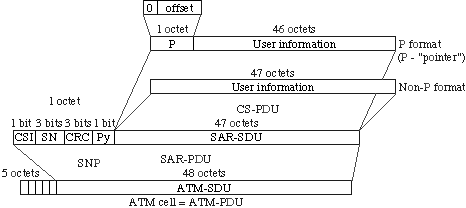
P = octet offset of data block over 2 cells (= 0111 111 if not required) CSI = Convergence Sublayer Indication CRC = Cyclic Redundancy Check SN = Sequence Number (non-P; CSI = 0 P format; CSI = 1 only if SN = 0,2,4 or 6) SNP = Sequence Number Protection Py = Parity (even, 1 bit) SAR = Segmentation And Reassembly PDU = Protocol Data Unit
see ITU-T standard I.363
See discussion about AAL1.
Cellware AAL1 board (Manual - 50K text + pictures)
AAL2

CRC = Cyclic Redundancy Check IT = Information Type LI = Length Indication PDU = Protocol Data Unit SAR = Segmentation And Reassembly SN = Sequence Number
see ITU-T standard I.363
AAL3/4
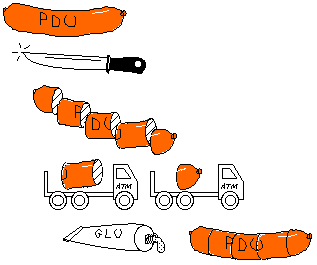
AAL3/4 and AAL5 both deal with the transport of traditional data packets (PDUs or protocol dat units). AAL3/4 was originally specified by the ITU-T and has been specified by the SMDS Interest Group (SIG) for the transport of SMDS packets. Cellware's TA-LAN uses AAL3/4 for just this purpose.
The ATM Forum decided that AAL3/4 was too complex and had an excessive overhead. AAL5 was then specified in a much simpler form with less data protection but less overhead. AAL5 now dominates the packet scene.
Traffic shaping
Once a packet is available, ready to be cut up, we could send the resulting cells out at the full speed of the ATM line. This burst can cause an overload. This is avoided by agreeing a maximum bandwidth in the traffic contract with the ATM switch . When a packet is ready to go, gaps are deliberately introduced between cells. In this way bursts and thus cell loss are avoided.
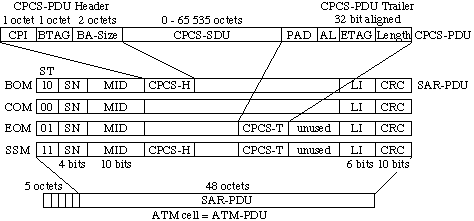
AL = 32 bit Alignment (using 0) Btag = Beginning Tag field per CPCS-PDU must be identical to Etag BA-size = Buffer Allocation size BOM = Beginning Of Message COM = Continuation Of Message CPI = Common Part Indicator (0 = octet as unit for BA-size, all other values for further study) CPCS = Common Part Convergence Sublayer CPCS-H = CPCS-Header CPCS-T = CPCS-Trailer CRC = Cyclic Redundancy Check EOM = End Of Message Etag = End Tag field - see Btag IT = Information Type Length = Length of CS-SDU LI = Length Indication (max 44 octets) MID = Multiplex Identification PAD = Padding (0) PDU = Protocol Data Unit SAR = Segmentation And Reassembly SDU = Service Data Unit SN = Sequence Number SSM = Single Segment Message ST = Segment Type
see ITU-T standard I.363
see Cellware's AAL3/4,5 board (Datasheet)
AAL5
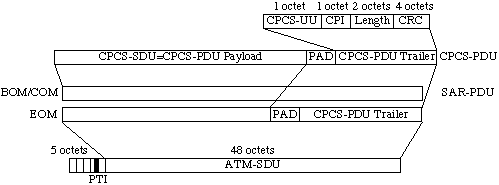
BOM = Beginning Of Message (PTI=0) COM = Continuation Of Message (PTI=0) CPCS = Common Part Convergence Sublayer CPCS-UU = CPCS User-to-User indication CPI = Common Part Indicator CRC = Cyclic Redundancy Check EOM = End Of Message (PTI=1) Length = Length of CPCS-SDU (Length=0 ->Abort function) PAD = Padding (0) to 47 octets PDU = Protocol Data Unit Reserved = 32 bit alignment of CPCS-PDU trailer PTI = Payload Type Indication SDU = Service Data Unit
see ITU-T standard I.363
see Cellware's AAL3/4,5 board (Datasheet)
Constant bit-rate AAL5
Note that in a further attempt to simplify matters, there is a big push for "constant bit-rate AAL5". This was driven by the ATM Forum and its application in transferring voice and video over an ATM powered Internet is clear. It is also well suited to the transfer of DVB data. (DVB - digital video broadcasting)
see Cellware's AAL5-CBR board (Datasheet)
How much capacity is really available for payload, when using ATM?
SDH/SONET E3
----------- ----------
Bit-rate on the line 155 520 000 34 368 000
Available for ATM cells 149 760 000 33 920 000 A
Available for cell payload 135 631 698 30 720 000 B=A*48/53
AAL1 payload (using SDT) 131 393 208 29 760 000 C=B*46.5/48
AAL3/4 payload (SSM)# 101 723 774 23 040 000 D=B*36/48
AAL5 payload (SSM)# 113 026 415 25 600 000 E=B*40/48
(# - worst case)
|
Rudower Chaussee 5 |
Phone (+49 30) 67008-0 |
Email: info@cellware.de |